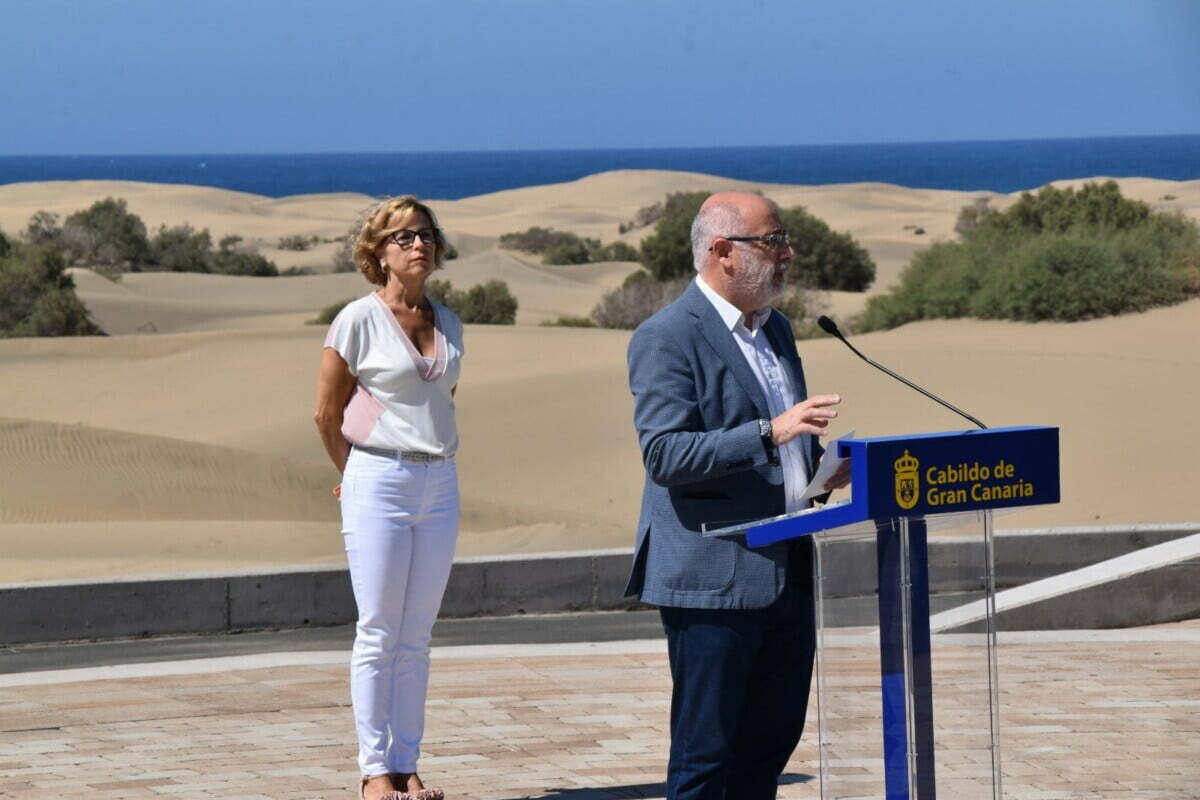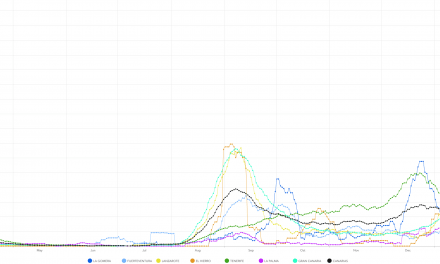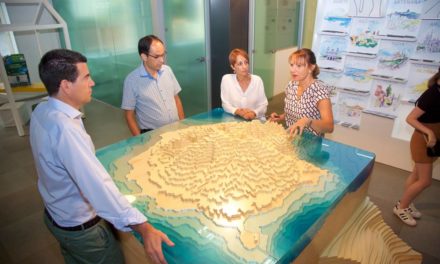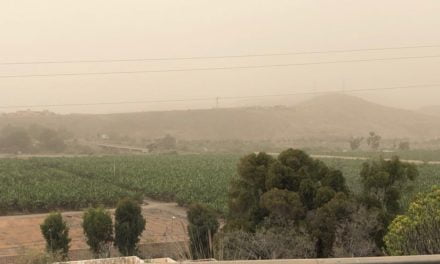The Dunas de Maspalomas Special Nature Reserve on the south of Gran Canaria is to now have a permanent surveillance team made up of 4 environmental agents and 2 officers from the Policia Local of San Bartolomé de Tirajana. The Maspalomas Dune system is unique in the Canary Islands will be maintained by a specialist environmental care team of 7 people. Members of the public are no longer to be allowed to just wander through the dunes. The four Environment officers and the policia local officers will have sanctioning capacity, which means they can legally fine you for endangering or damaging this protected area.
Fines will vary depending on whether the environmental offence committed is deemed to be minor or serious, ranging between €150 and €600 for minor offences, but for serious offences may reach up to €600,000 such as wholesale removal of sands from, or gratuitous harm to, the environment.
 The objective is primarily to ensure that the public can only transit exclusively along the planned routes compatible with the protection of this unique dune field which has, during the State of Emergency, recovered much of its natural virgin state, not seen since half a century ago, before tourism arrived in Maspalomas.
The objective is primarily to ensure that the public can only transit exclusively along the planned routes compatible with the protection of this unique dune field which has, during the State of Emergency, recovered much of its natural virgin state, not seen since half a century ago, before tourism arrived in Maspalomas.
The Cabildo de Gran Canaria and the Town Council of San Bartolomé de Tirajana have joined forces to now protect this gem of Gran Canaria, which is as representative of nature tourism and the natural landscapes of the island as is its imposing volcanic summit.
The Maspalomas Dunes Special Natural Space Master Plan already includes eight kilometers of existing trails that the public can enjoy, which are already marked with 1,500 bollard-signs as part of the ‘Masdunas del Cabildo de Gran Canaria‘ recovery project, which has also included the replanting of special plants that help generate new dunes to replace those that have been lost over the years. The work has also included the removal of Mozambique tilapia, an invasive exotic species which is now present in the Charca de Maspalomas oasis.
The ‘lockdown’ confinement, which disallowed recreational beach use, has not only helped restore the Maspalomas Dunes to their idyllic appearance from 50 years ago, but has accelerated the results of this pioneering project, which has now caught the attention of the international scientific community, as the Masdunas team actions have aided the recovery of 40,000 tons of sand which were likely to be lost to the sea, moving the sand, allowing it to form new dunes, which several decades ago still naturally came within seventy meters of the sea, but more recently had shifted by more than two hundred meters.
 The new dunes are being formed thanks to the placement of tons of this sand, that was thought to be in danger of being washed away, back to the beginning of the natural circuit formed by the wind and by the restocking of native Traganum moquinii plants to catch it. Nature has also added a surprise to this work, with much of the sand that was extracted from the Punta de la Bajeta having been naturally replaced by the dynamics of the tides, washing sand back in to the ditches that were created.
The new dunes are being formed thanks to the placement of tons of this sand, that was thought to be in danger of being washed away, back to the beginning of the natural circuit formed by the wind and by the restocking of native Traganum moquinii plants to catch it. Nature has also added a surprise to this work, with much of the sand that was extracted from the Punta de la Bajeta having been naturally replaced by the dynamics of the tides, washing sand back in to the ditches that were created.
This is now being heralded as a new stage for training and information related to protecting this area, one of the most important natural environments on Gran Canaria.














Very good. We need more FINES to keep the public within the rules of the government. This is the way to go forward: More Rules & More Fines.
Does this mean that I can’t sunbathe in the Dunes and use the trees for shade when it gets to hot?
I liked it there was quiet not crowded didn’t have to deal with the typical holiday makers or people trying to push cheap products on me.
So is going there for privacy and sunbathing banned?